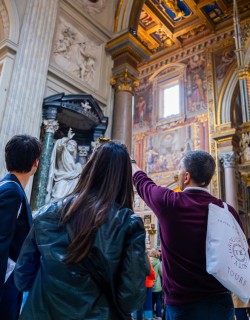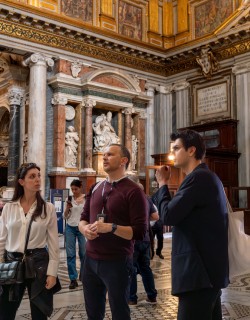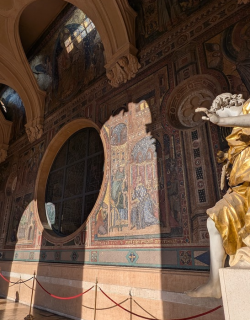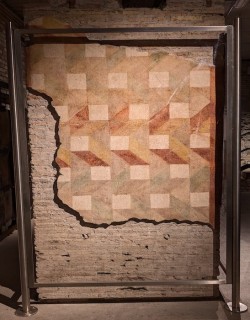Rome’s skyline is defined by world-renowned landmarks: the Colosseum’s ancient amphitheater, the soaring dome of St. Peter’s, the Sistine Chapel, the Pantheon’s timeless portico… These icons draw millions of visitors each year - and for good reason! We wouldn’t suggest skipping any of them on your first trip to Rome, but what if you’re on a tight budget or have seen them all before? Thankfully, beyond the beaten path lies a quieter, equally enriching side of the Eternal City: a collection of free museums and galleries that reveal hidden chapters of Rome’s story without costing a cent.
From the evocative ruins of imperial ambition at the Villa of Maxentius to the vibrant modern artworks at the Carlo Bilotti Museum, these free institutions are fascinating but never crowded. Read on for our guide to the best free museums in Rome, and discover everything from secret collections of ancient sculpture to fortified walls, Napoleonic memorabilia and more!
The Villa of Maxentius
This grand imperial villa is one of the finest archaeological sites of the Roman campagna, located along the ancient Appian Way. Maxentius didn’t last long on the Imperial throne, overthrown by Constantine and killed at the Battle of the Milvian Bridge in 312 AD, but this sprawling villa gives a clear idea of his ambitious plans for Rome.
The complex is made up of three distinct areas: the palace itself, a family mausoleum where the emperor’s young son Romulus was interred, and a large circus, or racetrack, that is the best preserved example of its type in Rome. The circus could hold 10,000 spectators, and featured a grand obelisk at its center - the same monument that now surmounts Bernini’s Fountain of the Four Rivers in Piazza Navona. Last year the free archaeological site was provided with a new lighting system, meaning you can enjoy the ancient spectacle even at night.
Opening hours: Tuesday to Sunday 10.00-16.00. Open until 19.00 on weekends in summer
The Giovanni Barracco Museum of Ancient Sculpture
You might very well find yourself exploring this stunning little museum all alone, as tourists seem almost completely unaware of its existence. Their loss is your gain! Housed in a beautiful Renaissance palace designed by renowned architect Antonio da Sangallo right in the heart of central Rome, the collection comprises excellent sculptures and artefacts from various ancient cultures - from Etruscan to Phoneician, Mesopotamian to Egyptian, Greek to Roman and more.
Particularly impressive are the Assyrian slabs, deriving from the royal palace of Nineveh and dating all the way back to the 9th century BC. Look out too for a magnificent mosaic that originally decorated Old St. Peter’s Basilica. Given its central location and great collection, this free museum in Rome is a perfect pit-stop for when you need a break from the chaos of the city.
Opening hours: Tuesday to Sunday 10.00-18.00
The Roman Walls Museum
The Museum of the Walls is one of our favorite hidden gems in all of Rome. Located within the structure of the imposing ancient Aurelian Walls that ring the Eternal City, the museum offers a deep-dive into the fortifications that made the ancient metropolis impregnable to invaders for centuries.
The information and exhibits are interesting enough, but the real highlight of the Museo delle Mura is the panoramic walkway that allows you to follow in the footsteps of the city’s defenders along the ramparts. The views over the city from atop the Porta San Sebastiano are stunning, with the Appian Way stretching off into the countryside and the towns of the Castelli Romani twinkling on the distant hills. All that for free!
Opening hours: Tuesday to Sunday 10.00-16.00.
The Museum of the Liberation of Rome
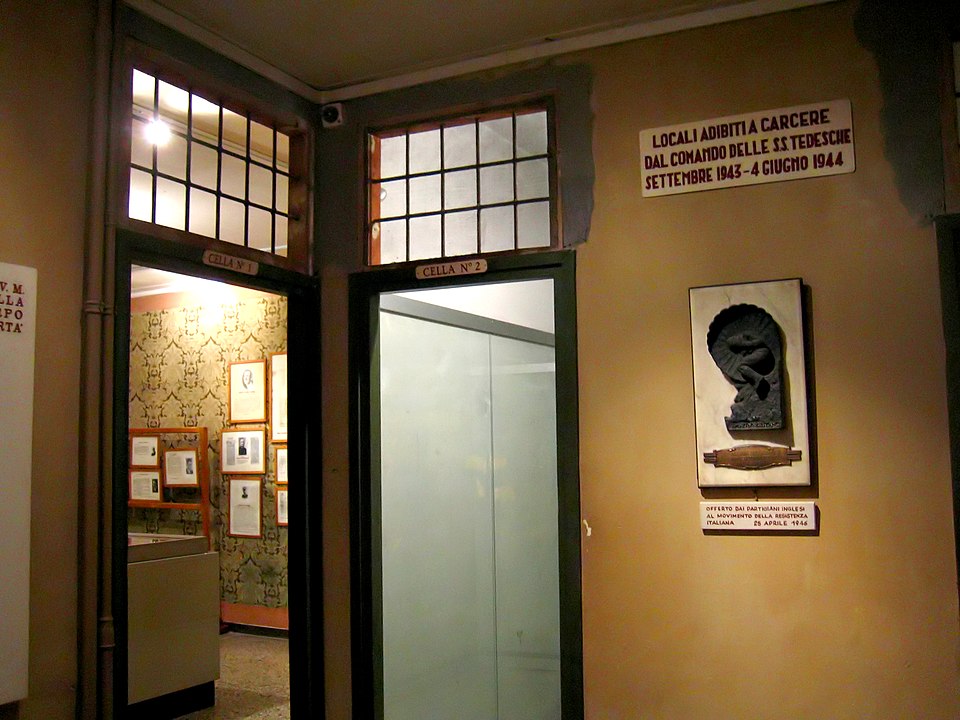 Photo by Anthony M., CC BY 2.0 via wikimedia
Photo by Anthony M., CC BY 2.0 via wikimedia
Set within the former SS prison on Via Tasso, the Museo Storico della Liberazione is one of the most powerful and sobering sites in Rome. Housed in the very rooms where over 2,000 prisoners were held during the Nazi occupation of the city from 1943 to 1944, the museum offers a poignant window into the reality of fascist repression and the courage of the Resistance.
During the occupation, the building served as the headquarters of the German security police, an interrogation site and prison. Many prisoners were tortured here during those nine months of terror. The cells have been carefully preserved and transformed into a permanent exhibition featuring letters, photographs, and personal belongings of detainees. Alongside these testimonies are documents, artworks, and archival material tracing the wider story of the Italian Resistance, the deportation of Jews, and civilian suffering under Nazi rule.
Founded in 1955, it is the oldest museum of the Resistance in Italy and continues to serve as a center for historical research, education, and the promotion of democratic values. A must visit for anyone interested in the story of WWII in Rome.
Opening hours: Monday to Sunday 09.00-19.00
The Napoleonic Museum
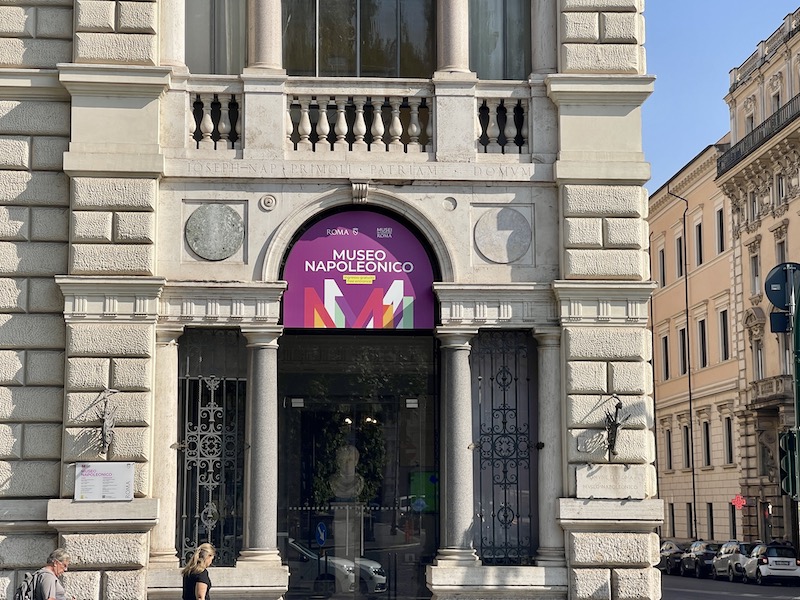
This hidden gem near Piazza Navona illuminates a chapter of Roman history that many visitors to the city aren’t familiar with: the period of Napoleonic occupation in the early 19th century. In 1798, French forces under General Bonaparte toppled the Papal States, briefly establishing the Roman Republic, and by 1805 Napoleon had crowned himself King of Italy - an act that placed Rome under French authority until his fall in 1814.
During this period, the Bonaparte family forged deep ties to the city: Napoleon’s mother, Maria Letizia Ramolino, lived in Rome, and his brothers Lucien and Joseph both spent years within its walls, intertwining imperial ambitions with local society.
The Museo Napoleonico, founded in 1927 in the ornate palace owned by Count Giuseppe Primoli (a great-grandson of Lucien and Joseph Bonaparte), preserves this legacy. Here you’ll encounter an intimate collection of family portraits and busts as well as elegant furniture and decorative objects commissioned directly by Napoleon. Letters, and official decrees further reveal how the Bonapartes’ Roman sojourn shaped both local culture and European politics.
Opening hours: Tuesday to Sunday 10.00-18.00
The Pietro Canonica Museum
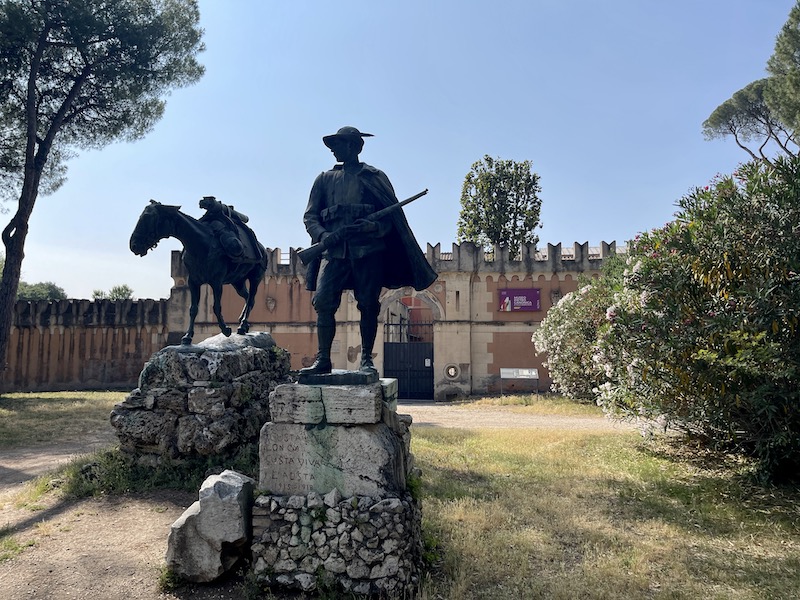
Located amidst the leafy surrounds of Villa Borghese, this delightful little museum celebrates the life and work of Pietro Canonica, an accomplished but underappreciated Italian sculptor who lived and worked here from 1927 until his death in 1959. The Museum is housed in a building known as the Fortezzuola, an 18th-century tower house that once served as a hunting lodge. It’s a fascinating experience wandering through the rooms of Canonica’s home studio, littered with sculptures, paintings, drawings, models and the tools of his artistic trade.
In the main atelier, you’ll find plaster models for public monuments - busts of Gabriele D’Annunzio and King Victor Emmanuel III - and life-sized marble figures in various stages of completion. Walls lined with preparatory sketches and clay maquettes reveal his meticulous process. Upstairs, the bedroom and library remain frozen in time: shelves of art-history volumes, family photographs, and personal correspondence complete this intimate portrait of an artist’s life.
Opening hours: Tuesday to Friday 10.00-16.00, Saturday and Sunday 10.00 - 19.00
The Carlo Bilotti Museum

Situated within the Borghese Orangery on Viale Fiorello La Guardia, the Carlo Bilotti Museum shines a spotlight on Rome’s underappreciated 20th-century art scene. In 1995, art patron Carlo Bilotti gifted his entire collection to the city, transforming a building that once sheltered citrus trees during the coldest winter months into a haven for modern art.
Highlights include several Giorgio de Chirico canvases in his trademark style - enigmatic piazzas, shadowed arcades, and stylized mannequins that evoke both mystery and melancholy. Works by other 20th-century masters like Andy Warhol, Giacomo Manzù and Larry Rivers round out the collection, alongside frequent exhibitions. A must for anyone interested in modern and contemporary art in Rome!
Opening Hours: Tuesday to Friday 10:00 to 16:00, Saturday and Sunday 10:00 to 19:00
Museum of the Roman Republic and Garibaldi Memorial
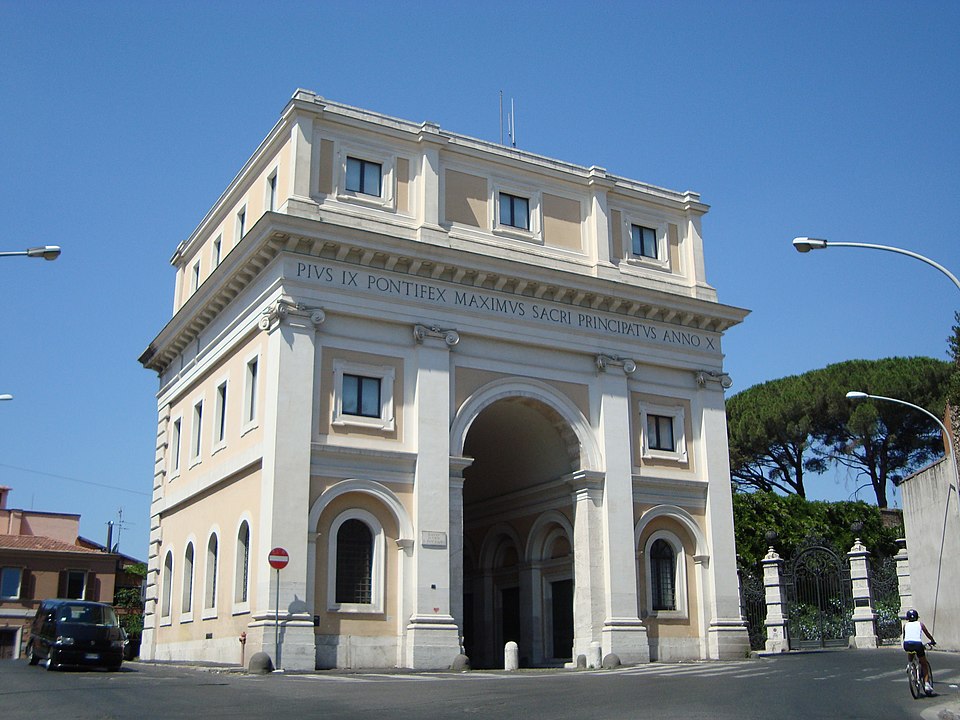 Photo by LPLT, CC BY-SA 3.0, via wikimedia
Photo by LPLT, CC BY-SA 3.0, via wikimedia
During the mid-19th century, the Risorgimento sought to unify Italy under a single national identity. Giuseppe Garibaldi - a charismatic revolutionary and military leader - was instrumental in these efforts, especially during the short-lived Roman Republic of 1849, when he led volunteers in defending Rome against the much greater French forces. The Museo della Repubblica Romana e della Memoria Garibaldina, housed within the 19th-century gatehouse of Porta San Pancrazio on the Gianicolo Hill, honors that pivotal moment in Italian history.
Spread across four floors, the museum presents portraits, busts, and personal artifacts of Garibaldi and his compatriots, alongside paintings, engravings, uniforms and correspondence. A detailed scale model and multimedia installation vividly recreate the French siege of Rome from April to July 1849. Upper galleries commemorate fallen heroes like Luciano Manara and Goffredo Mameli - author of Fratelli d’Italia, Italy’s national anthem - and display the forward-thinking 1849 Republican Constitution.
Opening Hours: Tuesday to Friday 10:00 to 14:00, Saturday and Sunday 10:00 to 18:00
The Academy of Saint Luke
Just steps from the Trevi Fountain, the Accademia Nazionale di San Luca is one of Italy’s oldest and most prestigious institutions for the visual arts. Founded in 1593 by painter Federico Zuccari, it evolved from the earlier University of the Arts of Painting, whose roots trace back to the 15th century. Named after Saint Luke - the evangelist traditionally believed to have painted the first portrait of the Virgin Mary—the Academy was established to elevate and protect the professions of painting, sculpture, and later architecture.
Since 1934, the Academy has been housed in the Baroque Palazzo Carpegna, where it continues to champion the fine arts through exhibitions, lectures, and support for emerging talent. Its collection, displayed in a recently restored gallery, includes works by Guido Reni, Canova, and Canaletto, as well as pieces created for academic competitions held since its earliest days. Quiet, scholarly, and beautifully preserved, it’s a perfect stop for those seeking a deeper cut of Rome’s artistic past.
Opening Hours: Tuesday to Friday 15:00 to 19:00, Saturday 10:00 to 19:00
MORE GREAT CONTENT FROM THE BLOG:
- Everything you Need to Know About Visiting Rome in 2025
- Visiting Rome on a Budget
- How to visit the Colosseum in 2025: Tickets, Hours, and More
- 7 Things you Need to Know About the Trevi Fountain
- Visiting the Vatican Museums and St. Peter's Basilica: The Complete Guide
- 9 Things You Need to Know About the Pantheon in Rome
- 5 Reasons to Explore Italy with Through Eternity
- The Best Catacombs to Visit in Rome
For 25 years, Through Eternity have been organizing itineraries showcasing the best of Rome led by our resident expert guides. If you're planning a visit to the Eternal City this year, be sure to get in touch to help plan your perfect trip!


